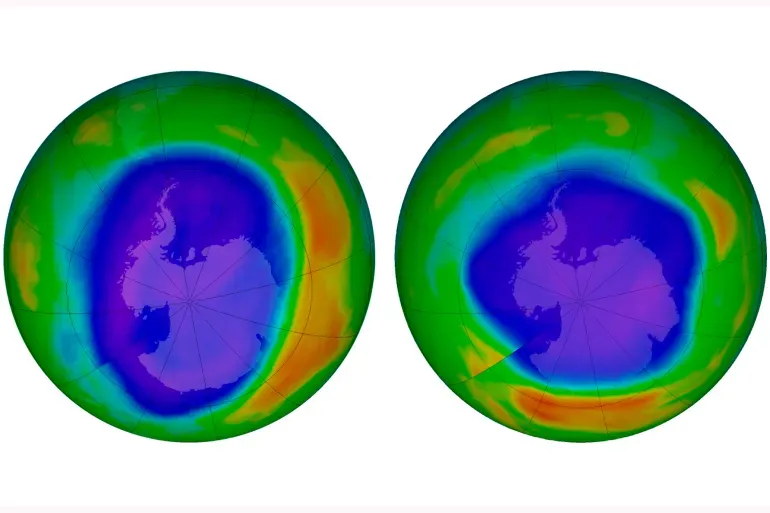UN Report: Ozone Layer to Completely Heal By 2066
According to a UN report released Monday, the giant hole in Earth's ozone layer over Antarctica could fully heal by 2066. The news comes after the last assessment of recovery progress — made four years ago — found only slight and preliminary signs of healing.

Facts
- According to a UN report released Monday, the giant hole in Earth's ozone layer over Antarctica could fully heal by 2066. The news comes after the last assessment of recovery progress — made four years ago — found only slight and preliminary signs of healing.
- Though healing is slow, the report shows the protective layer of the upper atmosphere — which has a global average thickness of 18 miles — could be back to the pre-thinning levels seen in 1980 in about 43 years. The publication further suggests that the ozone hole above the Arctic may be fully healed by 2045.
- Developed countries agreed to reduce the production of primary ozone-depleting substances in 1987, with the signing of the Montreal Protocol — substances including hydrochlorofluorocarbons (HCFCs) and chlorofluorocarbons (CFCs) were phased out of use in subsequent years due to concern over the ozone layer. More recently, the 2016 Kigali Amendment banned HFCs — potent ozone-depleting greenhouse gases known to damage Earth's climate.
- The report claims that, since the Montreal Protocol, levels of chief ozone-eating chemicals Chlorine and bromine have declined by 11.5% from their peak in 1993 and 14.5% since their peak in 1999.
- United Nations Environment Program Director Inger Andersen has pointed out the positive impacts this progress has on human health, estimating that cooperative action helping heal the ozone layer protects roughly 2M people every year from developing skin cancer.
- Despite this progress, however, scientists have warned that solar geoengineering designed to combat global warming, as well as efforts to artificially cool the planet through stratospheric aerosol injection, risk thinning the ozone layer by as much as 20% over Antarctica if enacted.
Sources: NBC, Independent, EPA, Al Jazeera, Daily Mail, and Associated Press.
Narratives
- Narrative A, as provided by The Conversation. Evidence of the efficacy the world’s coordinated response is having to tackle the ozone crisis is inspiring and scientists should celebrate this continued trend of ecological progress. Furthermore — as the shrinking ozone hole illustrates — nations can solve climate change issues if they come together. The world is capable of uniting to reduce fossil fuel usage and tackling pollution if it uses the successful Montreal Protocol model employed to minimize ozone-depleting substances.
- Narrative B, as provided by The Guardian. These results are certainly testament to the success of the Montreal Protocol, but the broader picture for the future of Earth's climate is not so certain. CFCs were only produced by a handful of companies, so it was relatively easy to reduce their production. The use of fossil fuels on the other hand — which poses the much greater issue pushing up global temperatures and interfering with life and ecosystems on a vast scale — is more widespread and has greater longevity in our atmosphere. The reality of the much more significant environmental challenge facing scientists, politicians, and the population at large when it comes to climate change is sobering.






